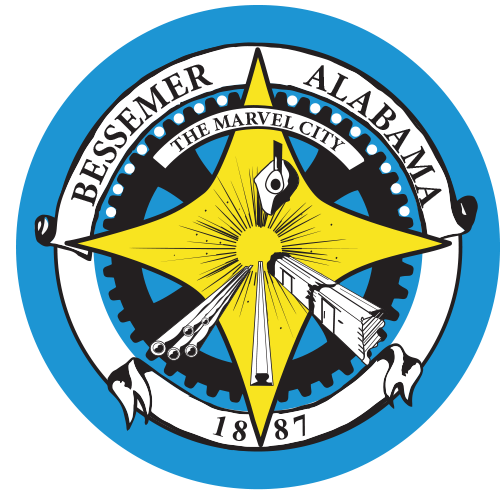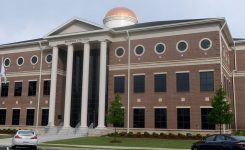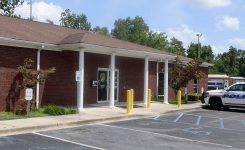Government
2016 Caper Report
CR-05 – Goals and Outcomes
Progress the jurisdiction has made in carrying out its strategic plan and its action plan. 91.520(a)
This could be an overview that includes major initiatives and highlights that were proposed and executed throughout the program year.
In FY2016 the City of Bessemer provided fifteen (15) Emergency Housing Repair Grants totaling $554,220.00 ($50,838.63 in Entitlement funds, and $3,381.37 in Program Income) and One (1) Housing Rehabilitation Loans totaling $57,229.06. The City budgeted $125,000.00 from the General Fund and also provided $53,661.87 in CDBG funding under the Public Services category for an annual youth job training program called Camp Bessemer which was budgeted in FY2016, but was not completed till the summer of 2017. $50,000.00 was set aside for Parks and Recreation, but was moved by substantial amendment to provide match for a first time home buyers program grant. Unfortunately that grant was cancelled. However the $50,000.00 will be moved, once again by substantial amendment for another eligible purpose. The City partnered with Habitat for Humanity to provide much needed housing repair services to CDBG eligible citizens in particularly difficult circumstances where CDBG funds could not be used directly because of the location of properties in flood zones. The Economic and Community Development Department conducted programs designed to market CDBG Housing and Homeownership programs. The Department also worked with The American Kidney Fund to bring medical services to over 100 Bessemer residents. This program raised awareness within the community of both the Kidney Fund and local CDBG program availability. The Department partnered with the Bessemer Public Housing Authority to host 500 Senior Citizens at the Senior Health and Fitness Day along with 27 health vendors. This was another opportunity to provide services to Citizens while marketing the availability of CDBG programs. The Department partnered with the Regional Leadership Conference to hold a conference attended by 300 youth which focused on jobs, business and education. In November 0f 2016 a Veteran’s Awareness day was held at the Bessemer Civic Center. The conference was sponsored by the Economic and Community Development Department and 17 veteran’s agencies. 300 veterans attended.
Comparison of the proposed versus actual outcomes for each outcome measure submitted with the consolidated plan and explain, if applicable, why progress was not made toward meeting goals and objectives. 91.520(g)
Categories, priority levels, funding sources and amounts, outcomes/objectives, goal outcome indicators, units of measure, targets, actual outcomes/outputs, and percentage completed for each of the grantee’s program year goals.
Goal | Category | Source / Amount | Indicator | Unit of Measure | Expected – Strategic Plan | Actual – Strategic Plan | Percent Complete | Expected – Program Year | Actual – Program Year | Percent Complete |
Economic Development Loan |
| CDBG: $ | Jobs created/retained | Jobs | 0 | 0 |
|
|
|
|
Economic Development Loan |
| CDBG: $ | Businesses assisted | Businesses Assisted | 8 | 0 | 0.00% | 5 | 0 | 0.00% |
Emergency Housing Repair Grants | Affordable Housing | CDBG: $ | Homeowner Housing Rehabilitated | Household Housing Unit | 179 | 43 | 24.02% | 35 | 15 | 42.86% |
Housing Rehabilitation Loans | Affordable Housing | CDBG: $ | Homeowner Housing Rehabilitated | Household Housing Unit | 35 | 6 | 17.14% | 12 | 1 | 8.33% |
Public Facilities | Non-Housing Community Development | CDBG: $ | Public Facility or Infrastructure Activities other than Low/Moderate Income Housing Benefit | Persons Assisted | 27000 | 27000 | 100.00% | 29000 | 0 | 0.00% |
Public Services | Non-Housing Community Development | CDBG: $ | Public Facility or Infrastructure Activities other than Low/Moderate Income Housing Benefit | Persons Assisted | 1 | 1 | 100.00% |
|
|
|
Public Services | Non-Housing Community Development | CDBG: $ | Public service activities other than Low/Moderate Income Housing Benefit | Persons Assisted | 375 | 150 | 40.00% | 75 | 75 | 100.00% |
Table 1 – Accomplishments – Program Year & Strategic Plan to Date
Assess how the jurisdiction’s use of funds, particularly CDBG, addresses the priorities and specific objectives identified in the plan, giving special attention to the highest priority activities identified.
PRIORITY #1: To provide rehabilitation assistance to low, and low to moderate homeowners by upgrading the existing stock of affordable housing through rehabilitation of structures classified as substandard, but suitable for rehabilitation. To bring housing into compliance with the International Housing CODE. To provide assistance for repairs to maintain housing stock in a decent, safe and sanitary condition. To limit the loss of affordable housing and to promote and provide for rehabilitation of historic properties. During FY2016 The City provided 15 Emergency Housing Repair Grants and 1 Housing Rehabilitation Loan.
PRIORITY #5: To address the needs of the elderly and disabled by providing Rehabilitation Loans and Emergency Repair grants to elderly homeowners, of low to moderate income, to address health, safety, stability and accessibility issues and to maintain the stock of affordable housing at the highest level possible. Fifteen (15) Emergency Housing Repair Grants were provided in FY2016 for elderly and disabled persons.
In addition to the aforementioned housing related priorities the City was able to complete one (1) Public Service project called Camp Bessemer which served 75 youth through job training activites. The City paid $125,000.00 from its General Fund and $53,661.87 to complete the project. The City also expended $250,000.00 from its General Fund for Clearance projects throughout the City.
CR-10 – Racial and Ethnic composition of families assisted
Describe the families assisted (including the racial and ethnic status of families assisted). 91.520(a)
| CDBG |
White | 2 |
Black or African American | 14 |
Asian | 0 |
American Indian or American Native | 0 |
Native Hawaiian or Other Pacific Islander | 0 |
|
| |
Total | 16 | |
|
| |
Hispanic | 0 | |
Not Hispanic | 0 | |
Table 2 – Table of assistance to racial and ethnic populations by source of funds
Narrative
During Program Year 2016 Sixteen (16) families were assisted under the City of Bessemer’s Housing Rehabilitation programs. Sixteen (15) were assisted under the Emergency Housing Rehabilitation Repair Grant program and One (1) was assisted under the Housing Rehabilitation Loan Program. Of those served Fourteen (14) were African American and Two (2) were White. $54,220.00 was disbursed under the Emergency Housing Repair Grant program and $57,229.06 was disbursed under the Housing Rehabilitation program. The Emergency Housing Repair Grant program is designed to address the needs of the Elderly and disabled by providing repairs that directly address a given disability and items that address health and safety. Wheel Chair Ramps and renovations that address the American’s With Disabilities Act are typical uses of funds. In these cases the Housing Rehabilitation Loan program included standard Housing Rehabilitation loans for existing homeowners and loans to new homebuyers for the purchase and rehabilitation of existing housing.
CR-15 – Resources and Investments 91.520(a)
Identify the resources made available
Source of Funds | Source | Resources Made Available | Amount Expended During Program Year |
CDBG | CDBG | 1,492,559 | 461,565 |
HOME | HOME |
|
|
HOPWA | HOPWA |
|
|
ESG | ESG |
|
|
Other | Other |
|
|
Table 3 – Resources Made Available
Narrative
The City of Bessemer received $522,131.00 in CDBG Entitlement funds for fiscal year 2016. All other funding derived from Prior Year’s Entitlement Funds, the Housing Revolving Loan fund, Economic Development Revolving Loan fund and Program Income generated from the HOPE 3 program. The City of Bessemer’s CDBG Administrative Costs and Delivery costs for staff salaries operate on a reimbursement basis to the City’s General Fund. Due to an ongoing standard audit of the City some the reimbursement to the City for the last few months of FY2016 were not paid until July of 2017. All programs are conducted on a City Wide basis.
Identify the geographic distribution and location of investments
Target Area | Planned Percentage of Allocation | Actual Percentage of Allocation | Narrative Description |
|
|
|
|
Table 4 – Identify the geographic distribution and location of investments
Narrative
All CDBG related programs are designed to serve low-to-moderate income individuals on a City-Wide basis. That is all areas of the City of Bessemer are served by CDBG related Housing Programs and are based on low-to-moderate income eligibility rather than a specific geographic area. All Entitlement based CDBG programs are designed to serve low and low to moderate income individuals. 100% of Housing Revolving Loan based programs serve low and Low-to-Moderate income persons. All Economic Development Revolving Loan based programs are designed to create jobs for low-to-modrate income persons.
The Public Service project, a Youth Job Training program, called Camp Bessemer, was based at 1700 3rd Ave. North in Bessemer. This program annually serves approximately 75 youth.
Leveraging
Explain how federal funds leveraged additional resources (private, state and local funds), including a description of how matching requirements were satisfied, as well as how any publicly owned land or property located within the jurisdiction that were used to address the needs identified in the plan.
The City disbursed $125,000.00 from its General Fund for Camp Bessemer, a public service activity, and $53,661.59 from CDBG for the same project. The City committed $250,000.00 for City Wide Blighted Housing Clearance from its General Fund allowing CDBG funds to be used for other housing purposes. The City also parners with various groups including the United Way, JCCEO, The Woodlawn Foundation to bring services to Bessemer’s citizens.
CR-20 – Affordable Housing 91.520(b)
Evaluation of the jurisdiction’s progress in providing affordable housing, including the number and types of families served, the number of extremely low-income, low-income, moderate-income, and middle-income persons served.
| One-Year Goal | Actual |
Number of Homeless households to be provided affordable housing units | 0 | 0 |
Number of Non-Homeless households to be provided affordable housing units | 35 | 16 |
Number of Special-Needs households to be provided affordable housing units | 0 | 0 |
Total | 35 | 16 |
Table 11 – Number of Households
| One-Year Goal | Actual |
Number of households supported through Rental Assistance | 0 | 0 |
Number of households supported through The Production of New Units | 0 | 0 |
Number of households supported through Rehab of Existing Units | 35 | 16 |
Number of households supported through Acquisition of Existing Units | 0 | 0 |
Total | 35 | 16 |
Table 12 – Number of Households Supported
Discuss the difference between goals and outcomes and problems encountered in meeting these goals.
The City of Bessemer is on track with the projections in its Consolidated Plan for FY2015-FY2019 for goals related to housing. The City disbursed $54,838.63 for Emergency Housing Repair Grants in FY2016 and was able to complete one (1) Housing Rehabilitation Loan totaling $57,229.06. The City is taking steps to increase the production of Housing Rehabiltation loans through its partnership with Habitat for Humanity. The financial collapse of 2008 continues to effect the ability of individuals at and below the low-to-moderate income level to qualify for loans. Credit requirements, although moderate, have proven to be difficult for many people to meet due to the financial hardships cause by the recession. Nevertheless, the City continues to emphasize outreach to increase the pool of eligible applicants with the help of the United Way. The City plans to convert its Revolving Loan Fund to Entitlement Funds and reallocate a significant portion of those funds to Emergency Grants in FY2017.
Discuss how these outcomes will impact future annual action plans.
Future Action Plans will likely focus on Housing, Public Services, Public Improvements and Economic Development activities related to the removal of Slum and Blight in the City’s National Historic District, although smaller sums will be directed to Economic Development Loans designed to facilitate Job Crteation. Clearance will be entirely financed by the City’s General Fund. The needs of those with disabilities continues to rise as the population ages and housing stock grows older. Therefore, Emergency Housing Repair Grants will continue to be a central tenent of the CDBG program for the City of Bessemer. The Emergency Housing Repair Grant is designed to address the needs of the elderly and the disabled with repairs specific to addressing disabilities thru compliance with the Americans With Disabilities Act and Health and Safety. Bessemer has a large elderly population that is addressed by this program. As revolving funds are shifted from economic development to housing Reconstruction and first time homeownership will become a larger part of the overall housing program. While not a direct part of the action plan the City will continue to pursue partnerships with agencies like JCCEO, The Woodlawn Foundation, Habitat for Humanity, The Veterans Administration and, of course, the Bessemer Public Housing Authority to leverage funds and increase outreach.
Include the number of extremely low-income, low-income, and moderate-income persons served by each activity where information on income by family size is required to determine the eligibility of the activity.
Number of Households Served | CDBG Actual | HOME Actual | |
Extremely Low-income | 0 | 0 | |
Low-income | 16 | 0 | |
Moderate-income | 0 | 0 | |
Total | 16 | 0 | |
Table 13 – Number of Households Served
Narrative Information
All City Housing programs are designed to serve individuals at or below the Low-to-Moderate income level. In addition, the majority of programs are designed to address the needs of the elderly and disabled. For instance, the Emergency Housing Repair Grant is targeted to elderly and diabled home owners with the goal of addressing specific repairs that address disabilities, as well as health and safety. Typical projects include wheel chair ramps and ADA bathroom and other issues of access. The demand for grant funds from those with disabilities exceeds available funding. By partnering with outside agencies the City has and hopes to continue to raise the effective funding of the CDBG program to a level commensurate with grant levels before reductions began.
CR-25 – Homeless and Other Special Needs 91.220(d, e); 91.320(d, e); 91.520(c)
Evaluate the jurisdiction’s progress in meeting its specific objectives for reducing and ending homelessness through:
Reaching out to homeless persons (especially unsheltered persons) and assessing their individual needs
The City of Bessemer works with One Roof, the area Continuum of Care, to reduce homeless numbers in our jurisdiction. From 2005 to 2016, the number of sheltered homeless persons counted at Point in Time was reduced while sheltered households with children increased. Otherwise statistics for FY2016 are not materially changed from FY2015. We feel this decrease in overall numbers has come about in great part because of the efforts of a dedicated street outreach team serving the entire Continuum.
Addressing the emergency shelter and transitional housing needs of homeless persons
In 2008, the first year the Continuum reported electronic Housing Inventory to HUD, there were a total of 367 emergency beds available, including 55 that were only available seasonally. In 2015, that number was 441 including 35 seasonally available beds. In 2008, there were 774 transitional beds available, and in 2015 that number had decreased to 614. Numbers for FY2016 were not materially different. However, the reduction in transitional beds should be viewed in the context of 262 Rapid Rehousing beds being made available in this Continuum, reflecting HUD’s emphasis that Rapid Rehousing can increase housing stability for many homeless people and can cost less than traditional models of transitional housing. This continuum has supported keeping a large, non-HUD funded substance abuse transitional program in this jurisdiction. The mission-based program does offer some beds for homeless people, and these are sober-living only beds in spite of the overall continuum emphasis being on running emergency and transitional housing as Housing First.
Helping low-income individuals and families avoid becoming homeless, especially extremely low-income individuals and families and those who are: likely to become homeless after being discharged from publicly funded institutions and systems of care (such as health care facilities, mental health facilities, foster care and other youth facilities, and corrections programs and institutions); and, receiving assistance from public or private agencies that address housing, health, social services, employment, education, or youth needs
This jurisdiction supports the Continuum efforts to keep people from becoming homeless after being discharged from institutions and systems of care. There are State Discharge Policies in place that strictly prohibit youth from being discharged from foster care and other youth facilities into homelessness, that prohibit State mental health facilities from discharging a person into homelessness, and that prohibit some correctional facilities from discharging into homelessness. The Continuum actively coordinates with Health Care entities to prohibit discharge into homelessness even though no official policy exists. The continuum is actively working to develop Medical Respite Care believing that the availability of this specialized housing for homeless persons would further the development of Health Care discharge policies.
The City of Bessemer also supports efforts of the Continuum to develop a Continuum-wide Coordinated Assessment. This fledgling program is run out of One Roof, the Continuum lead, and currently utilizes the VI-SPDAT 2.0 or the TAY-VI-SPDAT to evaluate and rank for vulnerability all homeless persons prior to placement into any CoC-funded projects. It is our understanding that all ESG programs were on Coordinated Assessment prior to the end of 2016, an addition this jurisdiction welcomes to assist with preventing homelessness with families and individuals. One Roof Coordinated Assessment is available by telephone and in person, thus making it accessible to the complete geography. The City of Bessemer believes that full implementation of the Coordinated Assessment, including the addition of the mainstream benefits providers, will further prevent homelessness.
Helping homeless persons (especially chronically homeless individuals and families, families with children, veterans and their families, and unaccompanied youth) make the transition to permanent housing and independent living, including shortening the period of time that individuals and families experience homelessness, facilitating access for homeless individuals and families to affordable housing units, and preventing individuals and families who were recently homeless from becoming homeless again
The City of Bessemer has lobbied to receive VASH vouchers in our jurisdiction. At the January 2016 Point in Time, there were 88 VASH beds including 40 beds dedicated to men and women who are chronically homeless. The City and the Bessemer Housing Authority would welcome additional VASH vouchers to assist our Veterans to make the transition from homeless to permanently housed. We know that the availability of this housing combined with the wrap around supportive services provided by the VA has contributed to the reduction in chronic homelessness among vets in this continuum. At PIT 2013 there were 155 sheltered and 39 unsheltered Vets in this continuum. By 2016, there were 156 sheltered and only 2 unsheltered Vets. Because of the Continuum efforts to coordinate all veteran resources including SSVF funds, each of those sheltered and unsheltered Vets was well known to providers. Those that were sheltered were working the process to get into permanent housing and the two that were unsheltered had refused all available housing.
As the Coordinated Assessment continues to add service providers, that process will refer clients to the correct resources the first time, thus shortening their length of homelessness. We are confident that the increases in Rapid Rehousing Programs supported by the Continuum will assist in shortening the period of time that homeless individuals and families spend homeless. Additionally, the 6 month post-program services allowed with Rapid Rehousing will assist in developing true housing stability thus preventing a recurrence of homelessness.
The local Continuum has worked hard to provide housing targeted to those experiencing chronic homelessness. From a 2005 number of 648 individuals, the continuum saw that number decline to only 239 in 2015 with a similar trend in 2016. Mainly because of the change in chronic definition, January 2016 PIT saw a marked increase in chronic homelessness down to only 92 individuals, and no chronically homeless families. City of Bessemer will continue to participate in the Continuum efforts to end chronic homelessness in our jurisdiction.
CR-30 – Public Housing 91.220(h); 91.320(j)
Actions taken to address the needs of public housing
Goals/Objectives
PHA GOAL #1: EXPAND THE SUPPLY OF ASSISTED HOUSING
The PHA established the following objectives to strive in meeting goal #1:
Leverage private or other public funds to create additional housing opportunities
Acquire or build units or developments
Progress Statement: BHA closed 1st RADs, in March 2015 and received a Portfolio RAD
approval March 25, 2015. RAD 2 was closed March 24, 2016 and will close RAD III in 2017.
PHA GOAL #2: INCREASE ASSISTED HOUSING CHOICES
The PHA established the following objectives to strive in meeting goal #2
Implement voucher homeownership program
Implement public housing or other homeownership programs
Convert public housing to vouchers
Progress Statement: BHA will not implement a voucher homeownership program
BHA is increasing its FSS graduates with a total of $121,051.00
Award in the period 2010-2014.
It should be noted that one of the primary goals for public housing in general is to assist residents in transitioning to home ownership. The Bessemer Public Housing Authority has programs in place to teach residents about home ownwership. These programs include educational components, but they also facilitate saving for down payments and other practical aspects of the home ownership process. The City of Bessemer seeks to address the needs of Public Housing and the desire to assist residents in transitiong to housing, by making the CDBG Buy/Rehab/Sell housing program available to program graduates. This program provides mortgage loans to residents to purchase and rehabilitate houses in the City of Bessemer. Public housing residents with good credit who have taken responsible actions to become home owners are an excellent fit for the Buy/Rehab/Sell program and the program, by virtue of its ability to provide low interest loans to persons that might have difficulty securing bank loans, is a strong vehicle to help residents secure mortgages in situations where they might not otherwise be able to. The Bessemer Public Housing Authority refers eligible partiocipants to the City of Bessemer for program participation.
Actions taken to encourage public housing residents to become more involved in management and participate in homeownership
Goals/Objectives
PHA GOAL #3: PROMOTE SELF-SUFFICIENCY AND ASSET DEVELOPMENT
OF ASSISTED HOUSEHOLDS
The PHA established the following objectives to strive in meeting goal #3
Increase the number and percentage of employed persons in assisted families
Provide or attract supportive services to improve assistance recipients’ employability
Progress Statement:
Expand FSS as a major 2017-2018 goal BHA
BHA will continue its ROSS Grant efforts and objective
BHA will expand FSS Program by increasing overall focus and adding strong link with United Way IDS.
The City of Bessemer has cooperated with the Bessemer Public Housing Authority to assist residents who participate in their home ownership transition program. The Bessemer Public Housing Authority refers resident who have completed the program to the Bessemer Economic and Community Development Department for their participation in the CDBG funded Buy/Rehab/Sell program. These participants, who are low to moderate in income, have saved money for a down payment and they have participated in home ownership and credit classes. As such the referrals from the Bessemer Public Housing Authority are excellent fits for the Buy/Rehab/Sell program, which is designed to provide housing for first time home buyers. The City has also conducted public housing seminars that included Public Housing Residents. These seminars teach basic home ownership, but they also explain CDBG housing programs that are available in Bessemer.
Actions taken to provide assistance to troubled PHAs
The Bessemer Public Housing Authority is not a troubled PHA. The City of Bessemer’s Economic and Community Development Department has a strong relationship with the PHA. The PHA has an ongoing program to help residents transition to permanent housing and the City of Bessemer, through CDBG Housing Programs, works actively with the PHA to assist as many persons as possible who are referred by the PHA. In addition the PHA and the Economic and Community Development Department regularly cooperate in bringing programs to the elderly and disabled citizens through public meetings and forums. The PHA, The City of Bessemer and Habitat for Humanity plan to work together to assist eligible PHA residents find permanent housing in the City of Bessemer.
CR-35 – Other Actions 91.220(j)-(k); 91.320(i)-(j)
Actions taken to remove or ameliorate the negative effects of public policies that serve as barriers to affordable housing such as land use controls, tax policies affecting land, zoning ordinances, building codes, fees and charges, growth limitations, and policies affecting the return on residential investment. 91.220 (j); 91.320 (i)
No actions have been or are necessary to remove or ameliorate the negative effects of public policies that serve as barriers to affordable housing at the local level. State laws regarding the ability of the City to gain control of properties from Clearance activities continue to need reform and the State Legislature has been on a trajectory to address that reform. The City maintains a coherant zoning plan with the ability to change as necessary. Building CODES are similar to the vast majority of Alabama cities. Fees and charges are moderate. The City encomasses more that 40 square miles of property that is suitable to develop. There are no policies negatively effecting return on residential development.
Actions taken to address obstacles to meeting underserved needs. 91.220(k); 91.320(j)
The deterioration of the infrastructure associated with low and moderate-income neighborhoods is viewed by the City as a contributing factor in creating blight and must be addressed in order to stabilize neighborhoods. The Clearance program now funded by the City of Bessemer ($250,000.00 in FY2012, FY2013, FY2014 and $250,000.00 in FY2015) addresses the blight of residential and commercial structures and residential safety. Seventy nine (79) Blighted Structures were removed in FY2015. The City provides a wide variety of CDBG funded Housing Loan and Grant programs designed to serve low and low-to-moderate income individuals with a focus on the elderly and disabled. The City also works to refer individuals to the Bessemer Public Housing Authority as necessary.
Please note the complete Fair Housing Plan for the City of Bessemer is attached for review.
Actions taken to reduce lead-based paint hazards. 91.220(k); 91.320(j)
The City of Bessemer follows all rules and regulations regarding the reduction of Lead Based Paint. The City provides testing in every instance where a painted surface could be disturbed by repairs. The City also notifies all participants of the dangers of lead based paint. Contractors working under the CDBG program are required to have all the certifications necessary to allow for the proper abatement of lead based paint hazards. The City has followed this polict consistently for many years.
Actions taken to reduce the number of poverty-level families. 91.220(k); 91.320(j)
The City has an active and aggressive economic development program that has attracted retail and industrial jobs. These jobs have a direct effect of improving the economic status of families throughout Bessemer. New Businesses such as the Dollar General distribution center, the Tannehill Promenade and Amsted Rail continue to add employees. In the long term the City has invested in a Public Services project for youth job training known as Camp Bessemer. The City contributes approximately $125,000.00 annually to the program and an annual contribution of over $50,000.00 from CDBG funds is also made to the program. This job training program served 75 youth in FY2016.
Actions taken to develop institutional structure. 91.220(k); 91.320(j)
The City has taken action to more effectively utilize all the departments that could impact housing related matters and well as matters related to Public Service and Public Facilities. The Housing and Inspections Deparment inspects and identifies non-conforming CODE conditions and assures those conditions are rectified as part of the process involving Housing Rehabilitation Loans. Economic and Community Devolpent Department personnel are trained and licensed in Lead Based Paint procedures and the Environmental Review process. The Economic and Community Development Department also has personnel trained in GIS mapping systems to assist in the Environmental Review process. These steps have worked to provide a comprehensive approach to move a given project from inception to completion as efficiently as possible.
Actions taken to enhance coordination between public and private housing and social service agencies. 91.220(k); 91.320(j)
The City of Bessemer has addressed and plans to continue addressing the problems associated with the poor condition of its housing stock and the opportunities for home ownership with its CDBG Housing Program. The City, as a CDBG entitlement, has a broad and effective housing program designed to provide loans and grants to improve housing and to provide opportunities for home ownership. The City has partnered with Habitat for Humanity to implement a program to buy and demolish dilapidated housing. In addition, the City allocated $250,000.00 annually in General Funds to demolish blighted housing as part of it’s annual FY2016 budget. The City has begun a partnership with Habitat for Humanity for housing rehabilitation and new construction. The partnership will serve to leverage City rehabilitation funds and take advantage of the properties acquired through demolition. Recently the Authority undertook the complete renovation of two large multi-family facilities, demolished one entire multi-family complex and has begun the process of building a subdivision of single family homes. The Economic Development Department and the Bessemer Public Housing AUthority actively work to provide opportunities for home ownership to persons transitioning from public housing.
Housing is an ongoing issue, but existing programs, initiatives and partnerships are and will continue to address those issues at an increasing rate.
Identify actions taken to overcome the effects of any impediments identified in the jurisdictions analysis of impediments to fair housing choice. 91.520(a)
Transportation was identified as an impediment to Fair Housing. The City and the Birmingham Regional Planning Commission worked together to complete a study to determine the feasibility of placing a transportation hub near downtown Bessemer. This hub would serve to provide public transport asccess for all persons in Bessemer and would eliminate transportation as an impediment for all practical purposes. The City provided CDBG funding to rehabilitate 16 houses under varying programs to make homeownership feasible for low income residents in FY2016. This includes a focused outreach involving UAB West and the Bessemer Fire Department to identify persons with disabilities that could not live at home without rehabilitation work to their houses to remove barriers.
CR-40 – Monitoring 91.220 and 91.230
Describe the standards and procedures used to monitor activities carried out in furtherance of the plan and used to ensure long-term compliance with requirements of the programs involved, including minority business outreach and the comprehensive planning requirements
The City of Bessemer’s Department of Economic and Community Development reviews all annual plan goals and projects on a quarterly basis, with more frequent reviews on those items requiring additional oversight. The purpose of such monitoring reviews is to determine that all programs are being carried out in accordance with the Consolidated Plan, and to ensure that statutory and regulatory requirements, including Section 3 requirements, are being met. Special attention is given to maintaining an expenditure rate that exceeds HUD’s expectation of having no more than 1.5 years of grant funds available on the City’s federal treasury letter of credit on the annual test date.
Citizen Participation Plan 91.105(d); 91.115(d)
Describe the efforts to provide citizens with reasonable notice and an opportunity to comment on performance reports.
The City of Bessemer Economic and Community Development Department advertises in local newspapers, posts notices in public facilities and posts notices on its web page to inform the public and provide a means for the public to comment on performance reports. The City also holds public meetings to discuss the CDBG program in general and accomplishments within the CDBG program specifically. Documents are made available at City Hall and the Public Library and will soon be available online. The City also posts signage in public buildings in English and Spanish and makes translations of any publically advertised document avaiable to citizens at their request.
CR-45 – CDBG 91.520(c)
Specify the nature of, and reasons for, any changes in the jurisdiction’s program objectives and indications of how the jurisdiction would change its programs as a result of its experiences.
Given the reduction in funding in recent years and the demand for housing services Housing is likely to become a greater focus. As a result economic development programs funded by CDBG related revolving funds may be reduced or discontinued to provide additional funding for housing programs. Emergency Housing Repair Grants will continue to be a primary focus. Housing Rehabilitaion Loans and Reconstruction may increase as a result of the partnership with Habitat for Humanity and their ability to leverage funds. The City has moved Clearance projects from CDBG funding to funding by the General Fund. Clearance issues are also likely to be impacted by the City’s partnership with Habitat for Humanity.
Does this Jurisdiction have any open Brownfields Economic Development Initiative (BEDI) grants?
No
[BEDI grantees] Describe accomplishments and program outcomes during the last year.
CR-45 – CDBG 91.520(c)
Specify the nature of, and reasons for, any changes in the jurisdiction’s program objectives and indications of how the jurisdiction would change its programs as a result of its experiences.
Given the reduction in funding in recent years and the demand for housing services Housing is likely to become a greater focus. As a result economic development programs funded by CDBG related revolving funds may be reduced or discontinued to provide additional funding for housing programs. Emergency Housing Repair Grants will continue to be a primary focus. Housing Rehabilitaion Loans and Reconstruction may increase as a result of the partnership with Habitat for Humanity and their ability to leverage funds. The City has moved Clearance projects from CDBG funding to funding by the General Fund. Clearance issues are also likely to be impacted by the City’s partnership with Habitat for Humanity.
Does this Jurisdiction have any open Brownfields Economic Development Initiative (BEDI) grants?
No
[BEDI grantees] Describe accomplishments and program outcomes during the last year.





